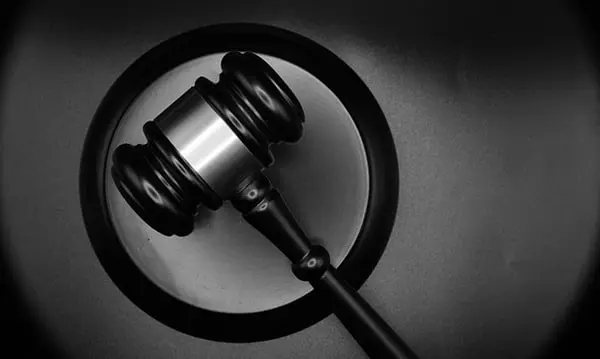The lawsuit involving Matthew Eisert, a practicing physician assistant (PA), has garnered significant attention due to its allegations of medical malpractice and negligence. As the legal proceedings continue, the case highlights critical concerns about professional conduct within the healthcare industry, particularly for physician assistants who hold substantial responsibility in patient care. This article explores the key allegations, legal challenges, and potential impacts of the lawsuit on Eisert’s career and the broader healthcare community.
Overview of the Case
Matthew Eisert has built his career as a physician assistant specializing in physical medicine and rehabilitation. Over the years, he has treated numerous patients, diagnosing and managing various musculoskeletal conditions. However, the current lawsuit against him alleges that he failed to provide adequate care, leading to harm. The plaintiffs accuse Eisert of medical malpractice, including improper diagnoses and failure to follow standard medical procedures, which allegedly resulted in negative health outcomes for patients.
The lawsuit has brought to light broader issues about the roles and responsibilities of physician assistants, especially regarding communication and supervision by licensed physicians. In this case, the plaintiffs argue that Eisert’s actions fell below the expected standard of care, potentially exposing him to legal liability for malpractice (sources: EasyInjuryClaims, LawExpertZone).
Legal Grounds and Evidence
The legal foundation of the lawsuit rests on claims of medical malpractice. Medical malpractice occurs when a healthcare provider’s actions—or lack thereof—deviate from accepted standards, leading to patient injury. In Eisert’s case, the plaintiffs contend that his failure to properly diagnose and treat patients constituted professional misconduct. Key evidence includes medical records, expert testimonies, and patient accounts, all aimed at demonstrating that Eisert’s decisions directly caused harm.
On the defense side, Eisert’s legal team asserts that he acted within the scope of his duties as a physician assistant and adhered to medical protocols. They argue that the negative outcomes were not a result of negligence but rather inherent risks associated with certain medical conditions. Pre-trial motions have been filed to challenge the admissibility of some evidence, and the court’s rulings on these motions will significantly shape the progression of the case (source: LawGuideline).
Professional Repercussions for Physician Assistants
The lawsuit has had a considerable impact on Eisert’s career and could set legal precedents for physician assistants (PAs) nationwide. PAs are integral to healthcare, often diagnosing conditions, prescribing treatments, and managing patient care under the supervision of a licensed physician. This lawsuit underscores the importance of maintaining high standards of communication and adherence to medical guidelines.
If the court rules against Eisert, it could lead to stricter regulations and oversight for PAs. Healthcare institutions may become more cautious in delegating responsibilities to PAs, and regulatory bodies could impose more rigorous requirements for documentation and supervision. Even if Eisert is not found liable, the lawsuit has already caused reputational damage that may affect his future in the medical field (source: MagKnows, LawExpertZone).
Communication and Documentation: Key Factors in Legal Disputes
One of the central themes in lawsuits involving PAs, including Eisert’s, is the importance of communication between PAs and their supervising physicians. In healthcare, clear communication is vital to ensure that both the PA and supervising doctor are aligned in their treatment plans. Inadequate communication can lead to improper treatment decisions, and in cases like Eisert’s, it becomes a focal point of the legal argument.
Additionally, poor documentation is often cited as a significant factor in medical malpractice cases. If critical details of patient care are not adequately recorded, it creates a vulnerability in the defense, as courts heavily rely on medical records to determine whether proper procedures were followed. Eisert’s case will likely explore whether proper documentation and communication protocols were maintained (source: LegalWar, LawGuideline).
Potential Outcomes and Industry Impacts
As the lawsuit moves forward, the potential outcomes could vary. A settlement could be reached, or the case may proceed to trial. If Eisert is found liable for medical malpractice, it could result in financial compensation to the affected patients and possibly disciplinary action from medical licensing authorities, including suspension or revocation of his PA license. Even if the case ends without a guilty verdict, the legal battle may still have lasting effects on his professional reputation.
The implications of this lawsuit extend beyond Eisert himself. It could lead to changes in how PAs are regulated, particularly regarding the level of supervision required and the protocols for documenting patient care. Malpractice insurance premiums for PAs could rise, and healthcare institutions might reevaluate their internal policies to mitigate legal risks (sources: EasyInjuryClaims, LawExpertZone).
Conclusion
The lawsuit against Matthew Eisert serves as a cautionary tale for the physician assistant profession and the broader healthcare community. It underscores the importance of following medical protocols, maintaining clear communication with supervising physicians, and ensuring thorough documentation of patient care. As the case unfolds, it may lead to significant changes in the way physician assistants are supervised and regulated, with potential repercussions for the entire medical field. This case reminds healthcare professionals of the importance of vigilance in their practice to avoid legal pitfalls and ensure the highest standard of patient care.


